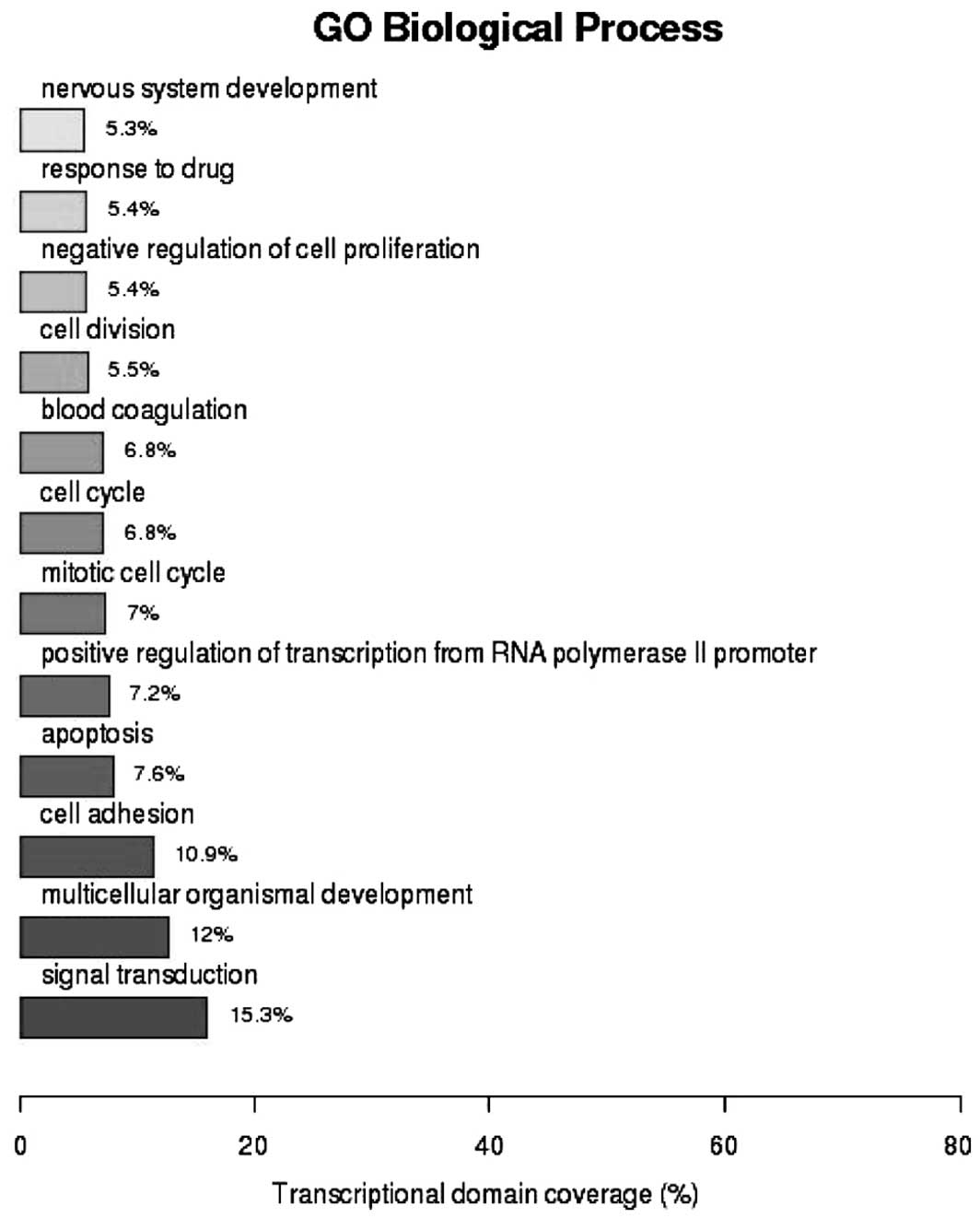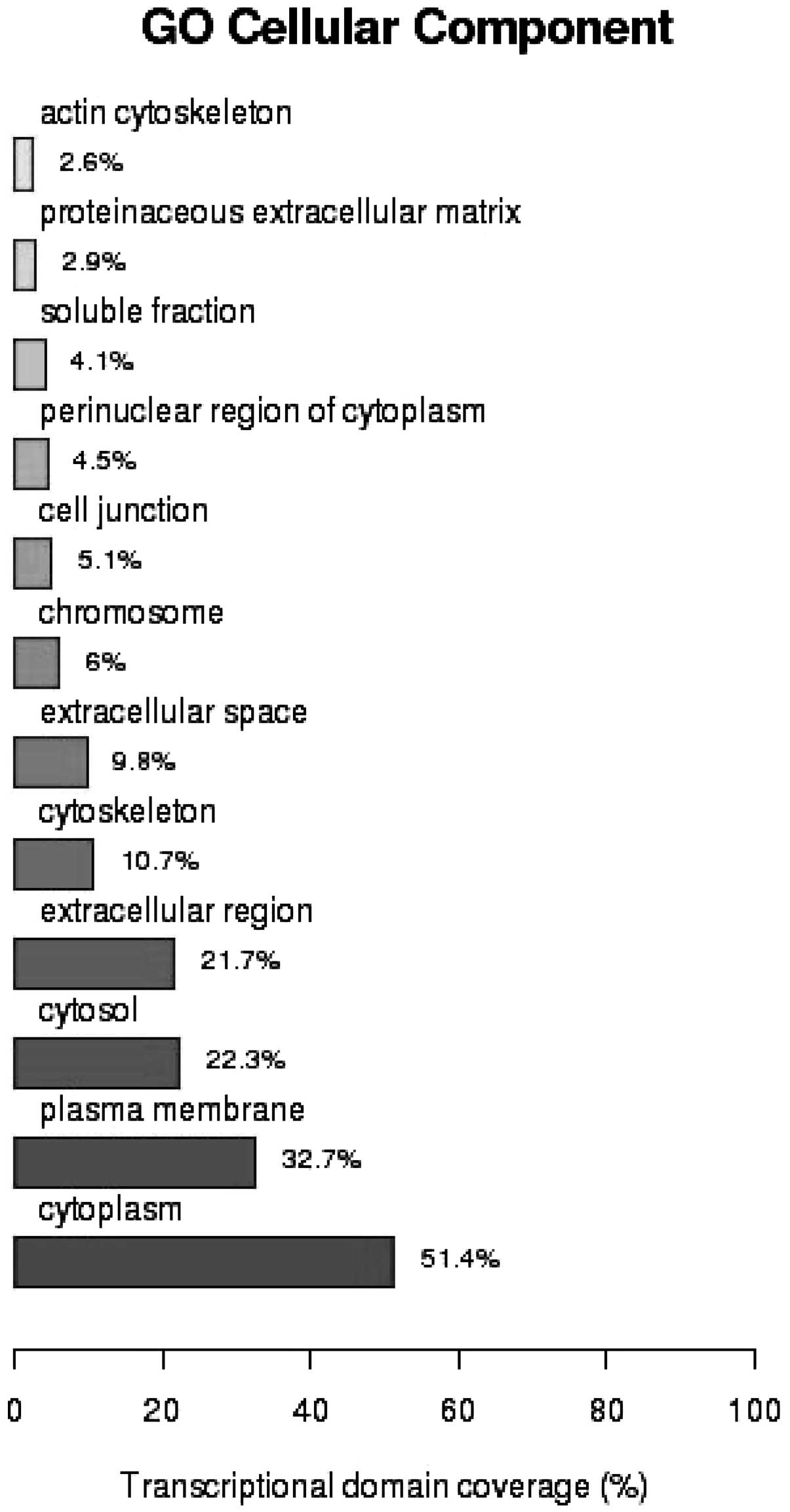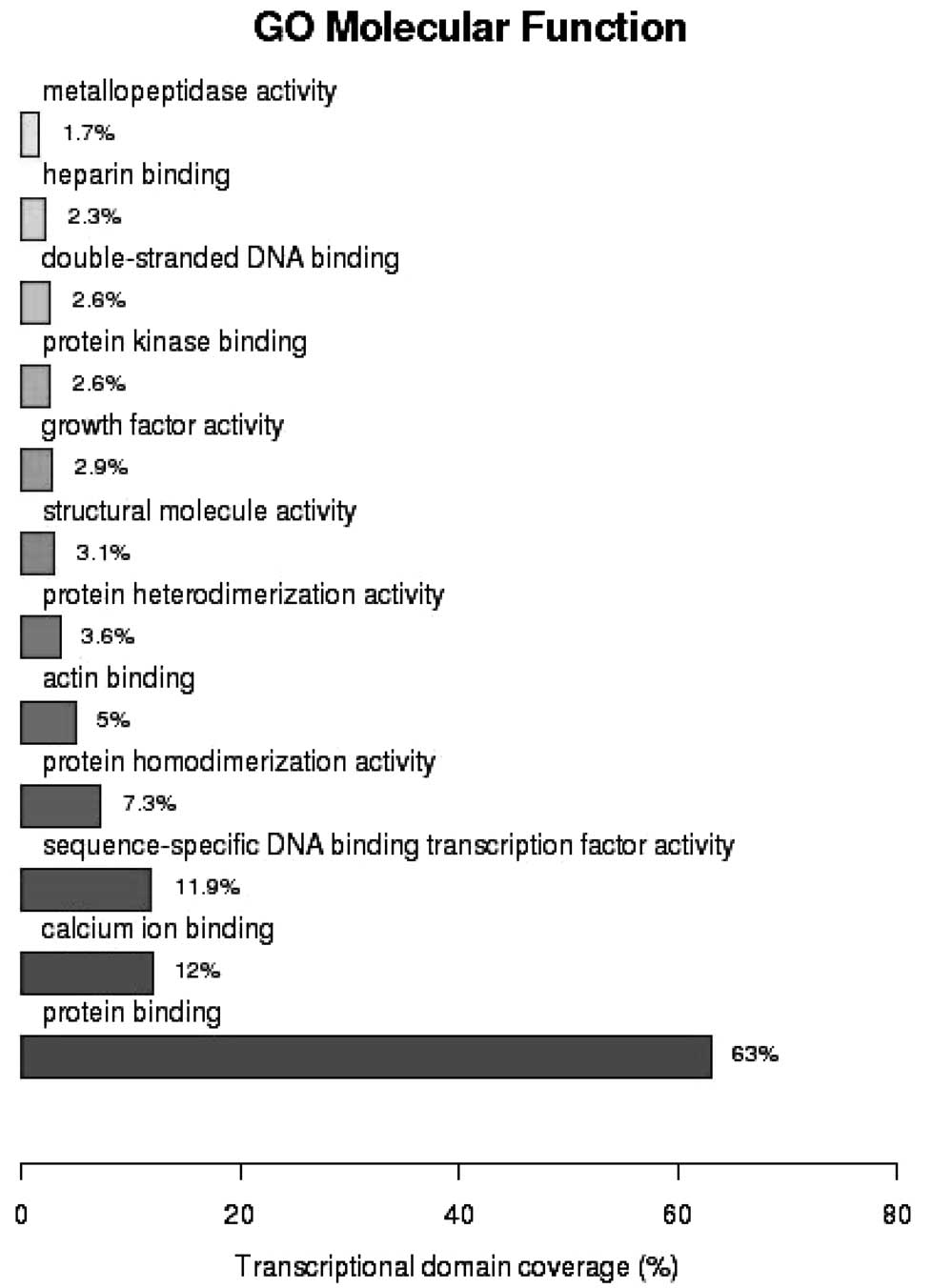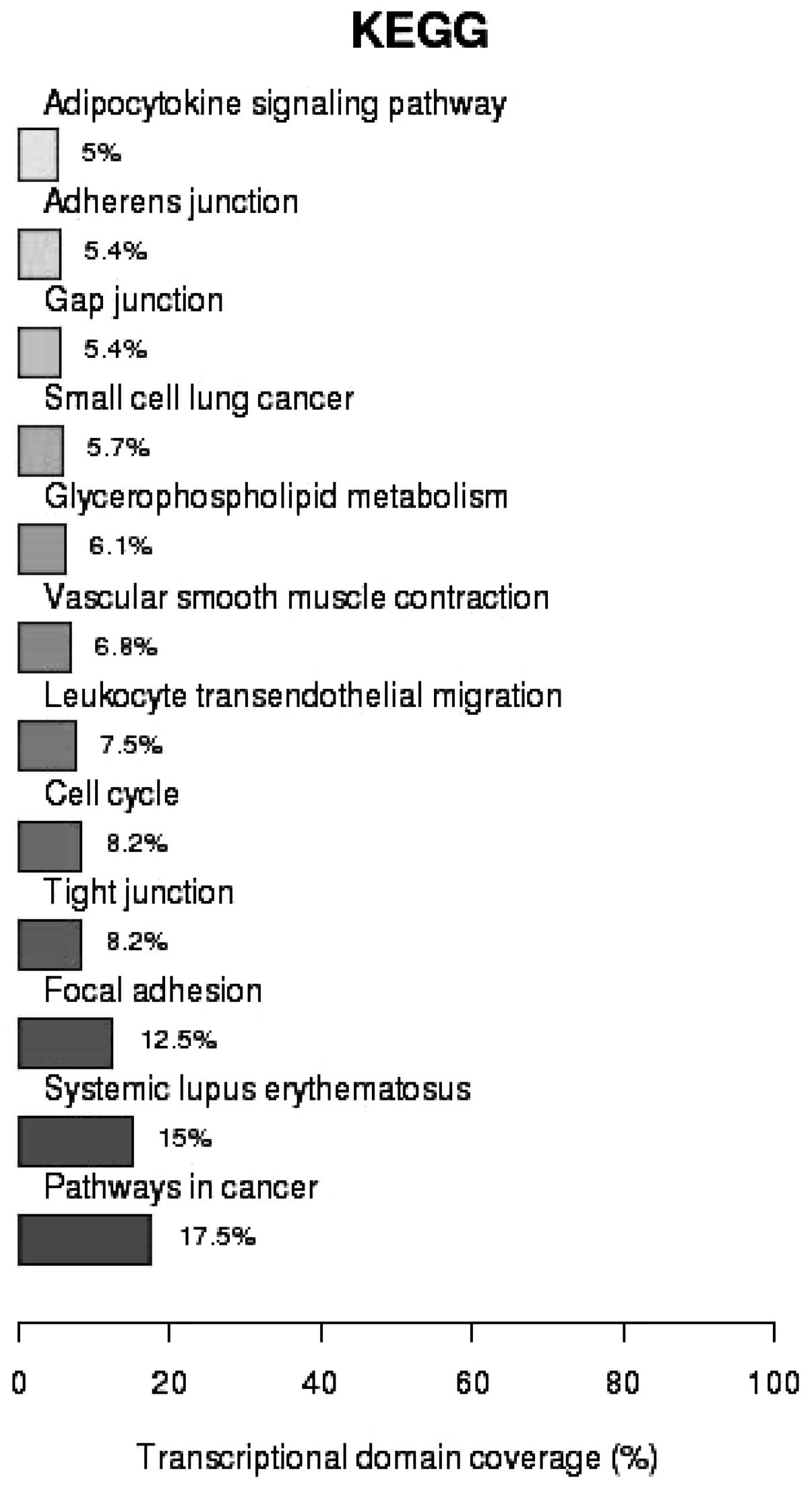|
1
|
Malhotra GK, Zhao X, Band H and Band V:
Histological, molecular and functional subtypes of breast cancers.
Cancer Biol Ther. 10:955–960. 2010. View Article : Google Scholar : PubMed/NCBI
|
|
2
|
Carter CL, Corle DK, Micozzi MS, Schatzkin
A and Taylor PR: A prospective study of the development of breast
cancer in 16,692 women with benign breast disease. Am J Epidemiol.
128:467–477. 1988.PubMed/NCBI
|
|
3
|
Wiechmann L and Kuerer HM: The molecular
journey from ductal carcinoma in situ to invasive breast cancer.
Cancer. 112:2130–2142. 2008. View Article : Google Scholar : PubMed/NCBI
|
|
4
|
Lakhani SR, Chaggar R, Davies S, et al:
Genetic alterations in ‘normal’ luminal and myoepithelial cells of
the breast. J Pathol. 189:496–503. 1999. View Article : Google Scholar
|
|
5
|
Yu KD, Wu LM, Liu GY, et al: Different
distribution of breast cancer subtypes in breast ductal carcinoma
in situ (DCIS), DCIS with microinvasion, and DCIS with invasion
component. Ann Surg Oncol. 18:1342–1348. 2011. View Article : Google Scholar
|
|
6
|
Buerger H, Mommers EC, Littmann R, et al:
Ductal invasive G2 and G3 carcinomas of the breast are the end
stages of at least two different lines of genetic evolution. J
Pathol. 194:165–170. 2001. View
Article : Google Scholar : PubMed/NCBI
|
|
7
|
Dziegiel P, Owczarek T, Plazuk E, et al:
Ceramide galactosyltransferase (UGT8) is a molecular marker of
breast cancer malignancy and lung metastases. Br J Cancer.
103:524–531. 2010. View Article : Google Scholar : PubMed/NCBI
|
|
8
|
Eswaran J, Cyanam D, Mudvari P, et al:
Transcriptomic landscape of breast cancers through mRNA sequencing.
Sci Rep. 2:2642012. View Article : Google Scholar : PubMed/NCBI
|
|
9
|
Gonçalves A, Finetti P, Sabatier R, et al:
Poly(ADP-ribose) polymerase-1 mRNA expression in human breast
cancer: a meta-analysis. Breast Cancer Res Treat. 127:273–281.
2011. View Article : Google Scholar
|
|
10
|
Volinia S and Croce CM: Prognostic
microRNA/mRNA signature from the integrated analysis of patients
with invasive breast cancer. Proc Natl Acad Sci USA. 110:7413–7417.
2013. View Article : Google Scholar : PubMed/NCBI
|
|
11
|
Gibb EA, Vucic EA, Enfield KS, et al:
Human cancer long non-coding RNA transcriptomes. PloS One.
6:e259152011. View Article : Google Scholar : PubMed/NCBI
|
|
12
|
Ji P, Diederichs S, Wang W, et al:
MALAT-1, a novel noncoding RNA, and thymosin beta4 predict
metastasis and survival in early-stage non-small cell lung cancer.
Oncogene. 22:8031–8041. 2003. View Article : Google Scholar : PubMed/NCBI
|
|
13
|
Wan LB and Bartolomei MS: Regulation of
imprinting in clusters: noncoding RNAs versus insulators. Adv
Genet. 61:207–223. 2008. View Article : Google Scholar : PubMed/NCBI
|
|
14
|
Kung JT, Colognori D and Lee JT: Long
noncoding RNAs: past, present, and future. Genetics. 193:651–669.
2013. View Article : Google Scholar : PubMed/NCBI
|
|
15
|
Gupta RA, Shah N, Wang KC, et al: Long
non-coding RNA HOTAIR reprograms chromatin state to promote cancer
metastasis. Nature. 464:1071–1076. 2010. View Article : Google Scholar : PubMed/NCBI
|
|
16
|
Tsai MC, Manor O, Wan Y, et al: Long
noncoding RNA as modular scaffold of histone modification
complexes. Science. 329:689–693. 2010. View Article : Google Scholar : PubMed/NCBI
|
|
17
|
Mourtada-Maarabouni M, Pickard MR, Hedge
VL, Farzaneh F and Williams GT: GAS5, a non-protein-coding RNA,
controls apoptosis and is downregulated in breast cancer. Oncogene.
28:195–208. 2009. View Article : Google Scholar
|
|
18
|
Bloom HJ and Richardson WW: Histological
grading and prognosis in breast cancer; a study of 1409 cases of
which 359 have been followed for 15 years. Br J Cancer. 11:359–377.
1957. View Article : Google Scholar : PubMed/NCBI
|
|
19
|
Grimson A, Farh KK, Johnston WK, et al:
MicroRNA targeting specificity in mammals: determinants beyond seed
pairing. Mol Cell. 27:91–105. 2007. View Article : Google Scholar : PubMed/NCBI
|
|
20
|
Garcia DM, Baek D, Shin C, et al: Weak
seed-pairing stability and high target-site abundance decrease the
proficiency of lsy-6 and other microRNAs. Nat Struct Mol Biol.
18:1139–1146. 2011. View Article : Google Scholar : PubMed/NCBI
|
|
21
|
Huang da W, Sherman BT and Lempicki RA:
Systematic and integrative analysis of large gene lists using DAVID
bioinformatics resources. Nat Protoc. 4:44–57. 2009. View Article : Google Scholar : PubMed/NCBI
|
|
22
|
Huang da W, Sherman BT and Lempicki RA:
Bioinformatics enrichment tools: paths toward the comprehensive
functional analysis of large gene lists. Nucleic Acids Res.
37:1–13. 2009. View Article : Google Scholar :
|
|
23
|
Li R, Zhong W and Zhu L: Feature screening
via distance correlation learning. J Am Stat Assoc. 107:1129–1139.
2012. View Article : Google Scholar : PubMed/NCBI
|
|
24
|
Bièche I, Chavey C, Andrieu C, et al: CXC
chemokines located in the 4q21 region are up-regulated in breast
cancer. Endocr Relat Cancer. 14:1039–1052. 2007. View Article : Google Scholar : PubMed/NCBI
|
|
25
|
Acharyya S, Oskarsson T, Vanharanta S, et
al: A CXCL1 paracrine network links cancer chemoresistance and
metastasis. Cell. 150:165–178. 2012. View Article : Google Scholar : PubMed/NCBI
|
|
26
|
Rouleau M, Patel A, Hendzel MJ, Kaufmann
SH and Poirier GG: PARP inhibition: PARP1 and beyond. Nat Rev
Cancer. 10:293–301. 2010. View
Article : Google Scholar : PubMed/NCBI
|
|
27
|
Krupenko SA and Oleinik NV:
10-formyltetrahydrofolate dehydrogenase, one of the major folate
enzymes, is down-regulated in tumor tissues and possesses
suppressor effects on cancer cells. Cell Growth Differ. 13:227–236.
2002.PubMed/NCBI
|
|
28
|
Oleinik NV, Krupenko NI and Krupenko SA:
Epigenetic Silencing of ALDH1L1, a Metabolic Regulator of Cellular
Proliferation, in Cancers. Genes Cancer. 2:130–139. 2011.
View Article : Google Scholar : PubMed/NCBI
|
|
29
|
Rinn JL, Kertesz M, Wang JK, et al:
Functional demarcation of active and silent chromatin domains in
human HOX loci by noncoding RNAs. Cell. 129:1311–1323. 2007.
View Article : Google Scholar : PubMed/NCBI
|
|
30
|
Lu L, Zhu G, Zhang C, et al: Association
of large noncoding RNA HOTAIR expression and its downstream
intergenic CpG island methylation with survival in breast cancer.
Breast Cancer Res Treat. 136:875–883. 2012. View Article : Google Scholar : PubMed/NCBI
|
|
31
|
Bernatsky S, Ramsey-Goldman R, Foulkes WD,
Gordon C and Clarke AE: Breast, ovarian, and endometrial
malignancies in systemic lupus erythematosus: a meta-analysis. Br J
Cancer. 104:1478–1481. 2011. View Article : Google Scholar : PubMed/NCBI
|
|
32
|
Tessier Cloutier B, Clarke AE,
Ramsey-Goldman R, et al: Breast cancer in systemic lupus
erythematosus. Oncology. 85:117–121. 2013. View Article : Google Scholar : PubMed/NCBI
|
|
33
|
Bernatsky S, Easton DF, Dunning A, et al:
Decreased breast cancer risk in systemic lupus erythematosus: the
search for a genetic basis continues. Lupus. 21:896–899. 2012.
View Article : Google Scholar : PubMed/NCBI
|
|
34
|
Belot A, Kasher PR, Trotter EW, et al:
Protein kinase cdelta deficiency causes mendelian systemic lupus
erythematosus with B cell-defective apoptosis and
hyperproliferation. Arthritis Rheum. 65:2161–2171. 2013. View Article : Google Scholar : PubMed/NCBI
|













